AI Index: State of AI in 13 Charts

In the new report, foundation models dominate, benchmarks fall, prices skyrocket, and on the global stage, the U.S. overshadows.
This year’s AI Index — a 500-page report tracking 2023’s worldwide trends in AI — is out.
The index is an independent initiative at the Stanford Institute for Human-Centered Artificial Intelligence (HAI), led by the AI Index Steering Committee, an interdisciplinary group of experts from across academia and industry. This year’s report covers the rise of multimodal foundation models, major cash investments into generative AI, new performance benchmarks, shifting global opinions, and new major regulations.
Don’t have an afternoon to pore through the findings? Check out the high level here.

A Move Toward Open-Sourced
This past year, organizations released 149 foundation models, more than double the number released in 2022. Of these newly released models, 65.7% were open-source (meaning they can be freely used and modified by anyone), compared with only 44.4% in 2022 and 33.3% in 2021.
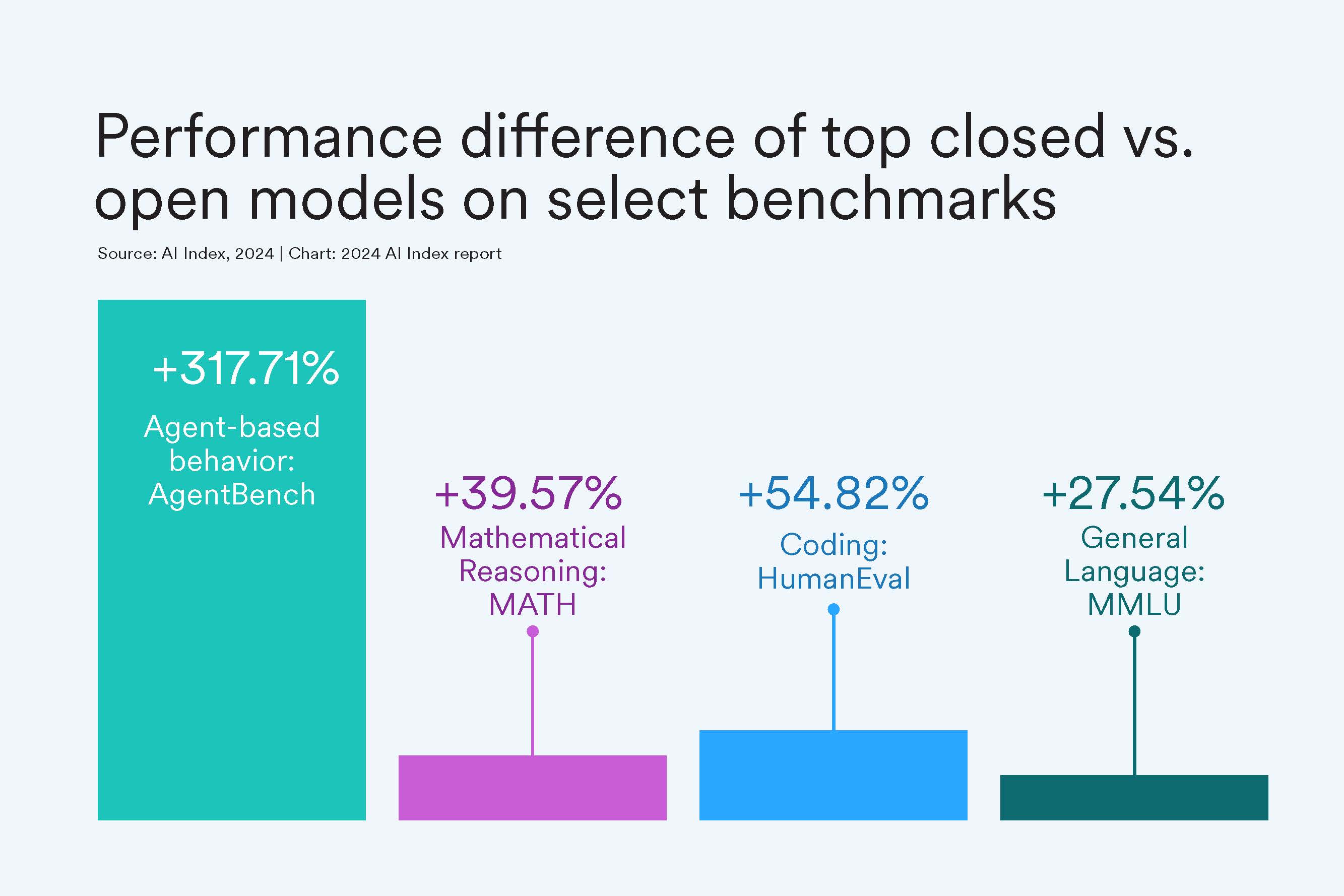
But At a Cost of Performance?
Closed-source models still outperform their open-sourced counterparts. On 10 selected benchmarks, closed models achieved a median performance advantage of 24.2%, with differences ranging from as little as 4.0% on mathematical tasks like GSM8K to as much as 317.7% on agentic tasks like AgentBench.
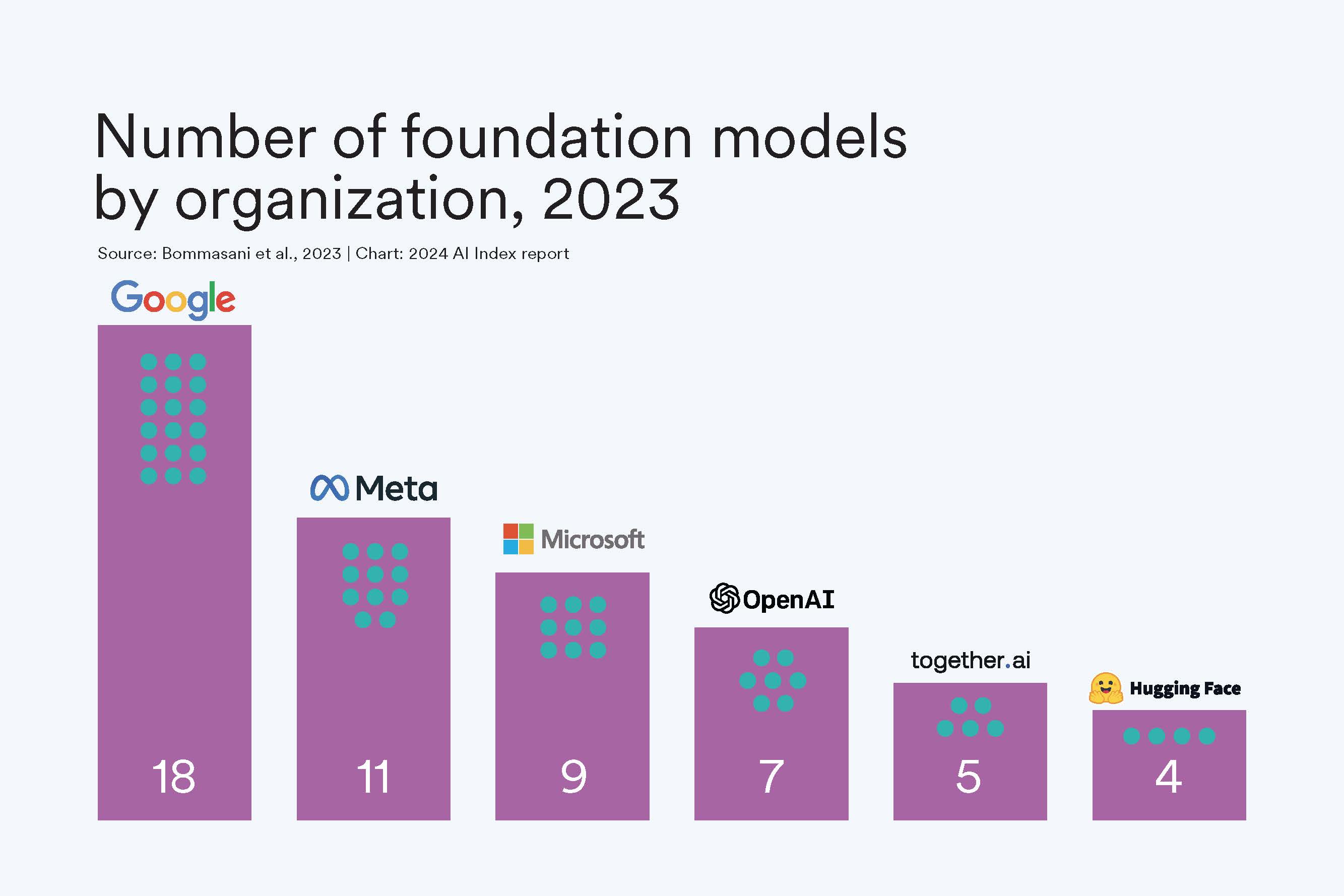
Biggest Players
Industry dominates AI, especially in building and releasing foundation models. This past year Google edged out other industry players in releasing the most models, including Gemini and RT-2. In fact, since 2019, Google has led in releasing the most foundation models, with a total of 40, followed by OpenAI with 20. Academia trails industry: This past year, UC Berkeley released three models and Stanford two.
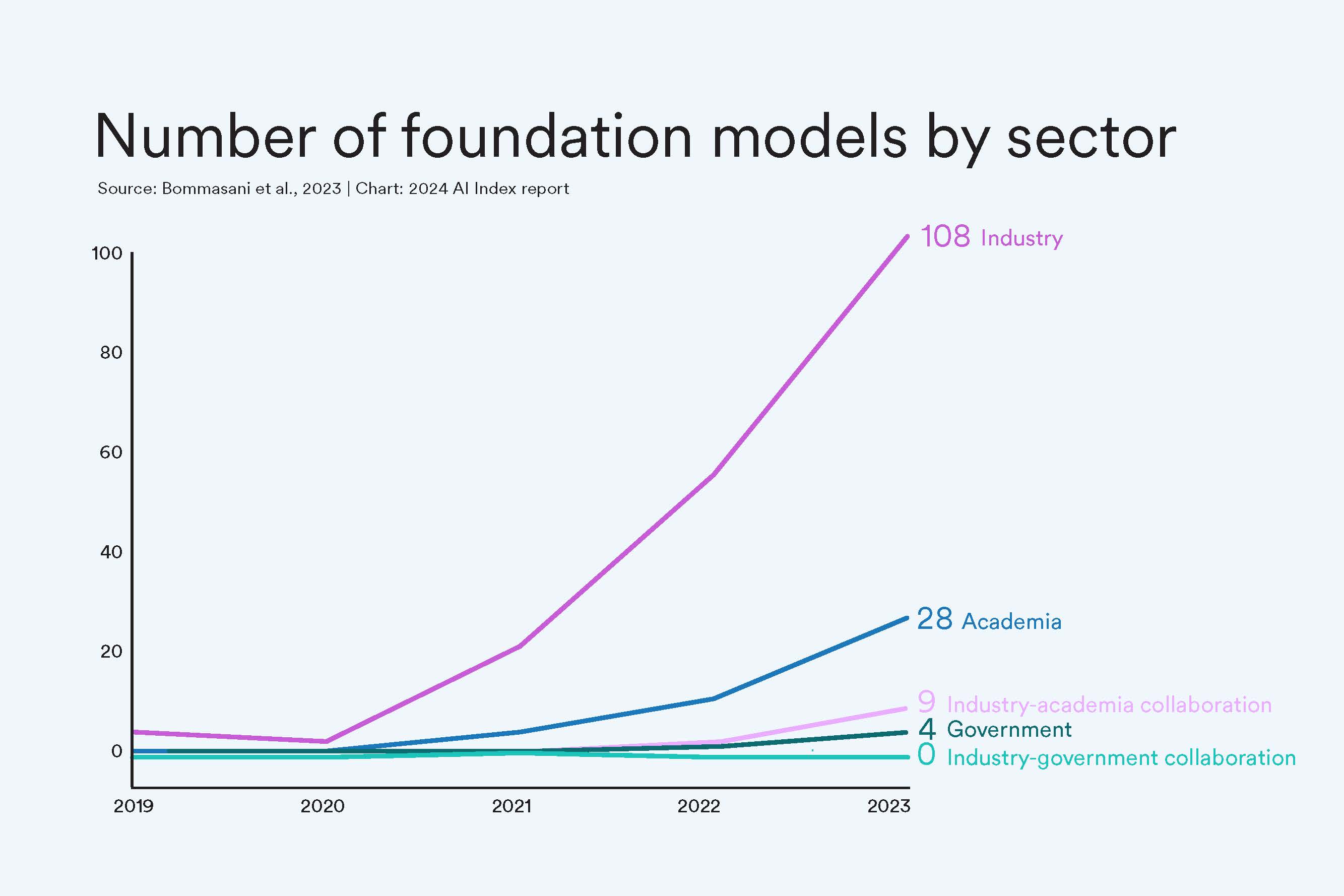
Industry Dwarfs All
If you needed more striking evidence that corporate AI is the only player in the room right now, this should do it. In 2023, industry accounted for 72% of all new foundation models.

Prices Skyrocket
One of the reasons academia and government have been edged out of the AI race: the exponential increase in cost of training these giant models. Google’s Gemini Ultra cost an estimated $191 million worth of compute to train, while OpenAI’s GPT-4 cost an estimated $78 million. In comparison, in 2017, the original Transformer model, which introduced the architecture that underpins virtually every modern LLM, cost around $900.

What AI Race?
At least in terms of notable machine learning models, the United States vastly outpaced other countries in 2023, developing a total of 61 models in 2023. Since 2019, the U.S. has consistently led in originating the majority of notable models, followed by China and the UK.
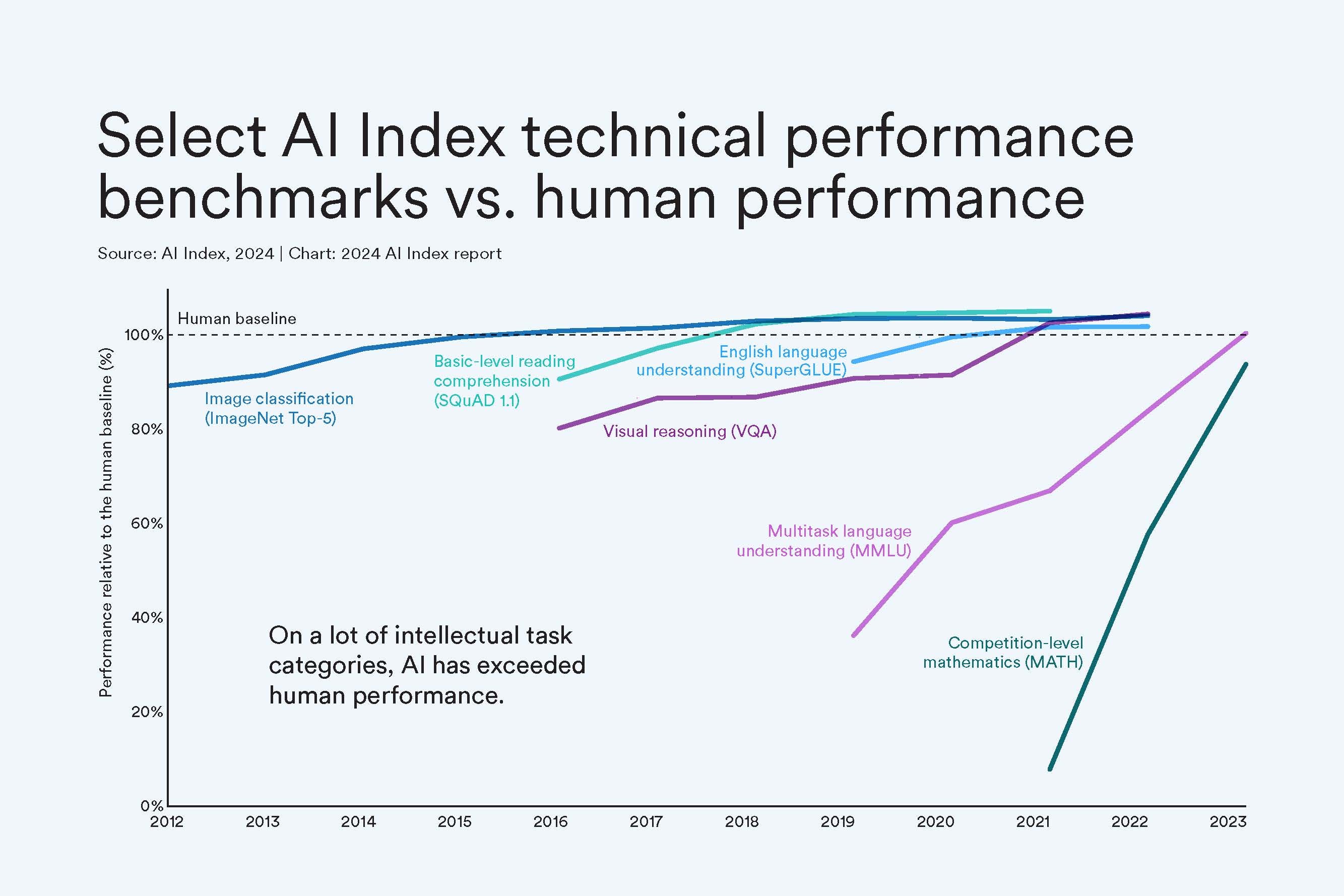
Move Over, Human
As of 2023, AI has hit human-level performance on many significant AI benchmarks, from those testing reading comprehension to visual reasoning. Still, it falls just short on some benchmarks like competition-level math. Because AI has been blasting past so many standard benchmarks, AI scholars have had to create new and more difficult challenges. This year’s index also tracked several of these new benchmarks, including those for tasks in coding, advanced reasoning, and agentic behavior.

Private Investment Drops (But We See You, GenAI)
While AI private investment has steadily dropped since 2021, generative AI is gaining steam. In 2023, the sector attracted $25.2 billion, nearly ninefold the investment of 2022 and about 30 times the amount from 2019 (call it the ChatGPT effect). Generative AI accounted for over a quarter of all AI-related private investments in 2023.
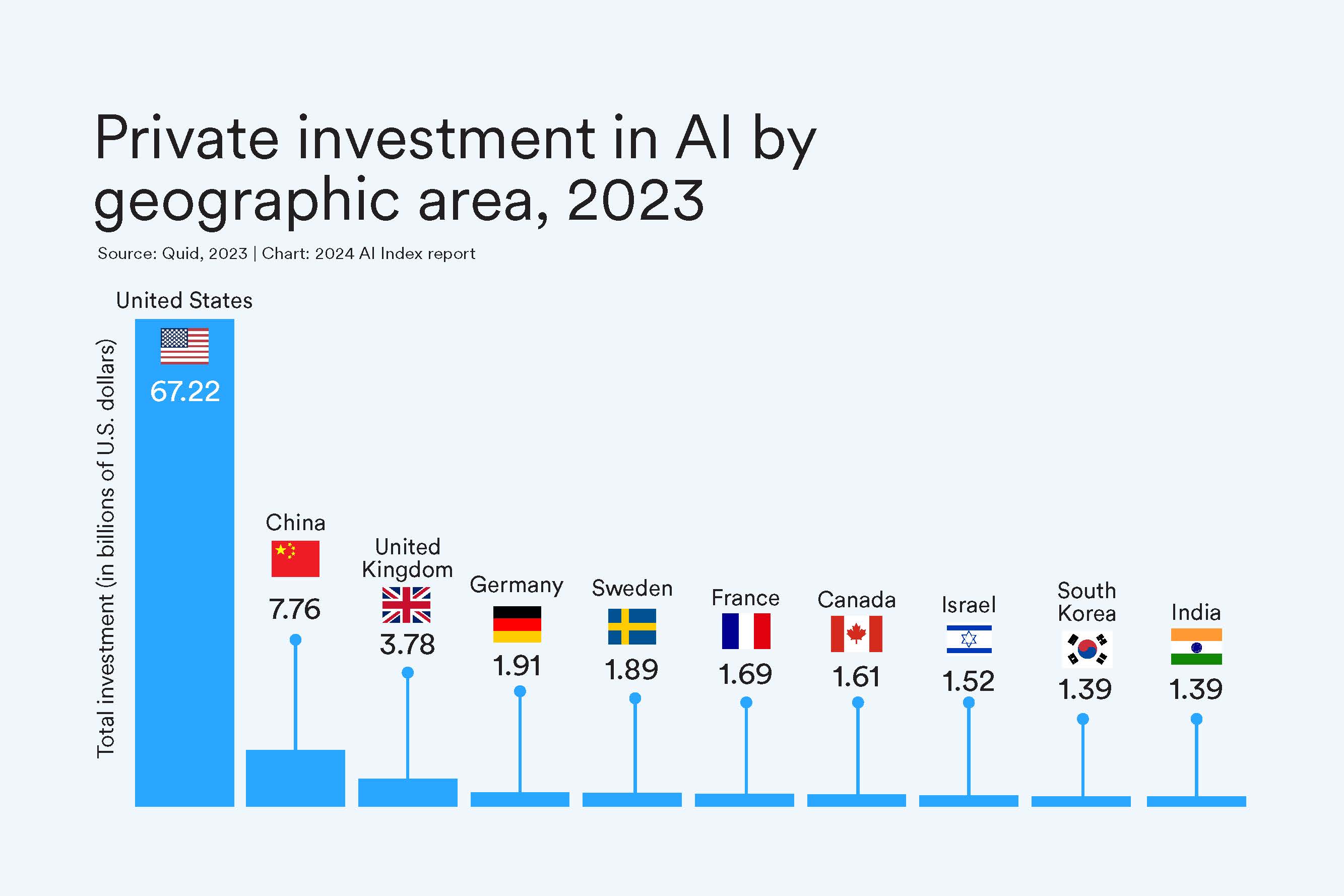
U.S. Wins $$ Race
And again, in 2023 the United States dominates in AI private investment. In 2023, the $67.2 billion invested in the U.S. was roughly 8.7 times greater than the amount invested in the next highest country, China, and 17.8 times the amount invested in the United Kingdom. That lineup looks the same when zooming out: Cumulatively since 2013, the United States leads investments at $335.2 billion, followed by China with $103.7 billion, and the United Kingdom at $22.3 billion.
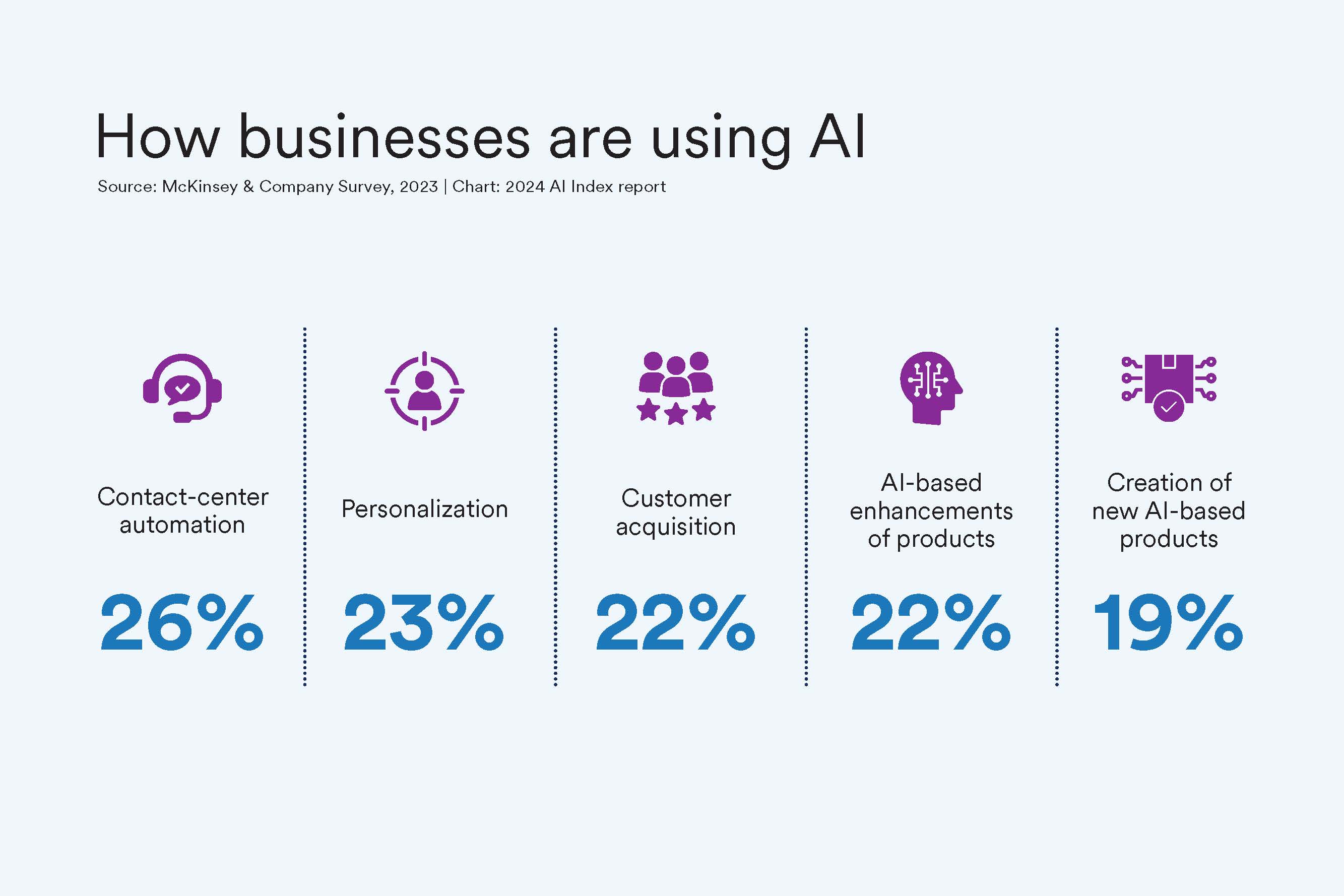
Where is Corporate Adoption?
More companies are implementing AI in some part of their business: In surveys, 55% of organizations said they were using AI in 2023, up from 50% in 2022 and 20% in 2017. Businesses report using AI to automate contact centers, personalize content, and acquire new customers.
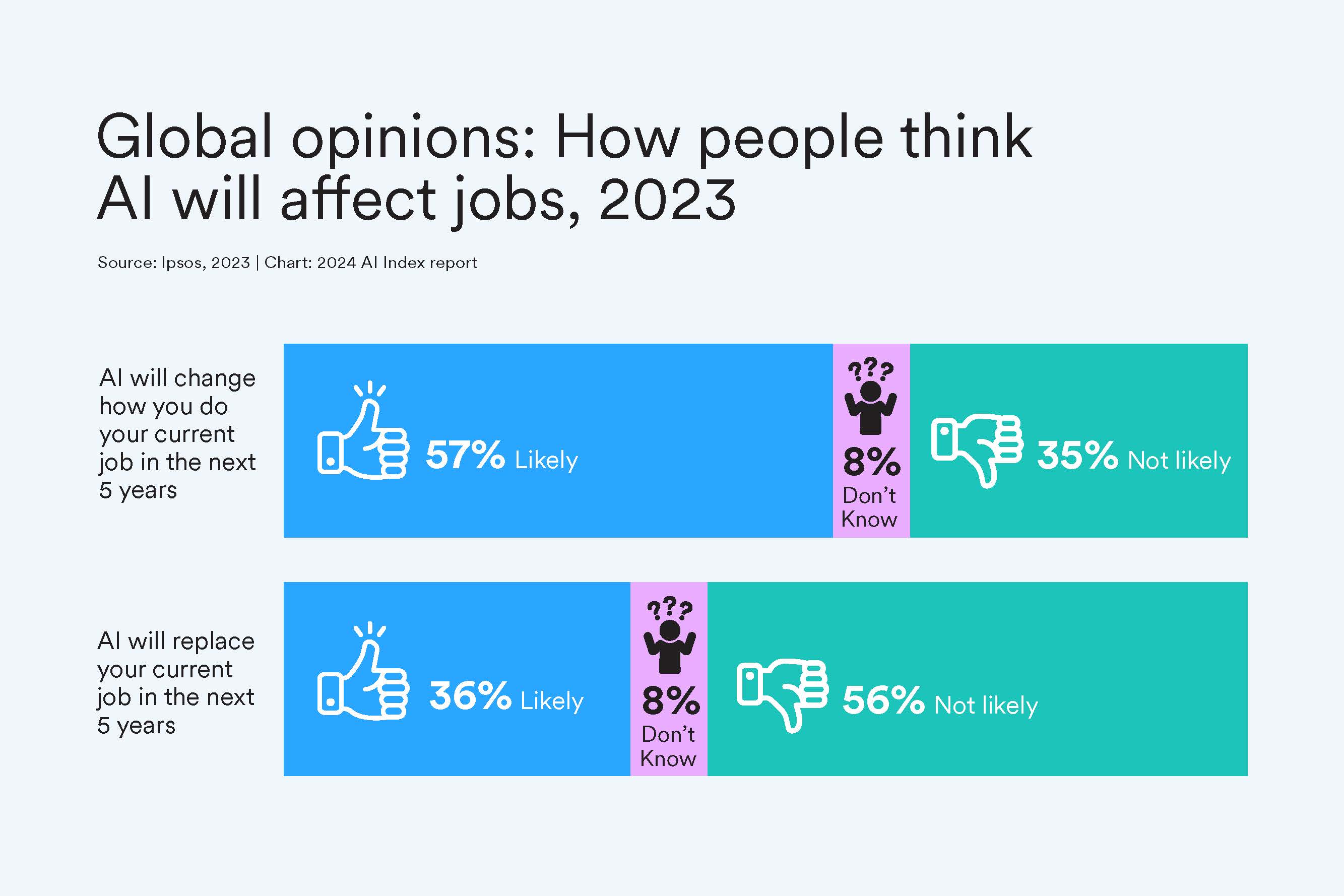
Younger and Wealthier People Worry About Jobs
Globally, most people expect AI to change their jobs, and more than a third expect AI to replace them. Younger generations — Gen Z and millennials — anticipate more substantial effects from AI compared with older generations like Gen X and baby boomers. Specifically, 66% of Gen Z compared with 46% of boomer respondents believe AI will significantly affect their current jobs. Meanwhile, individuals with higher incomes, more education, and decision-making roles foresee AI having a great impact on their employment.
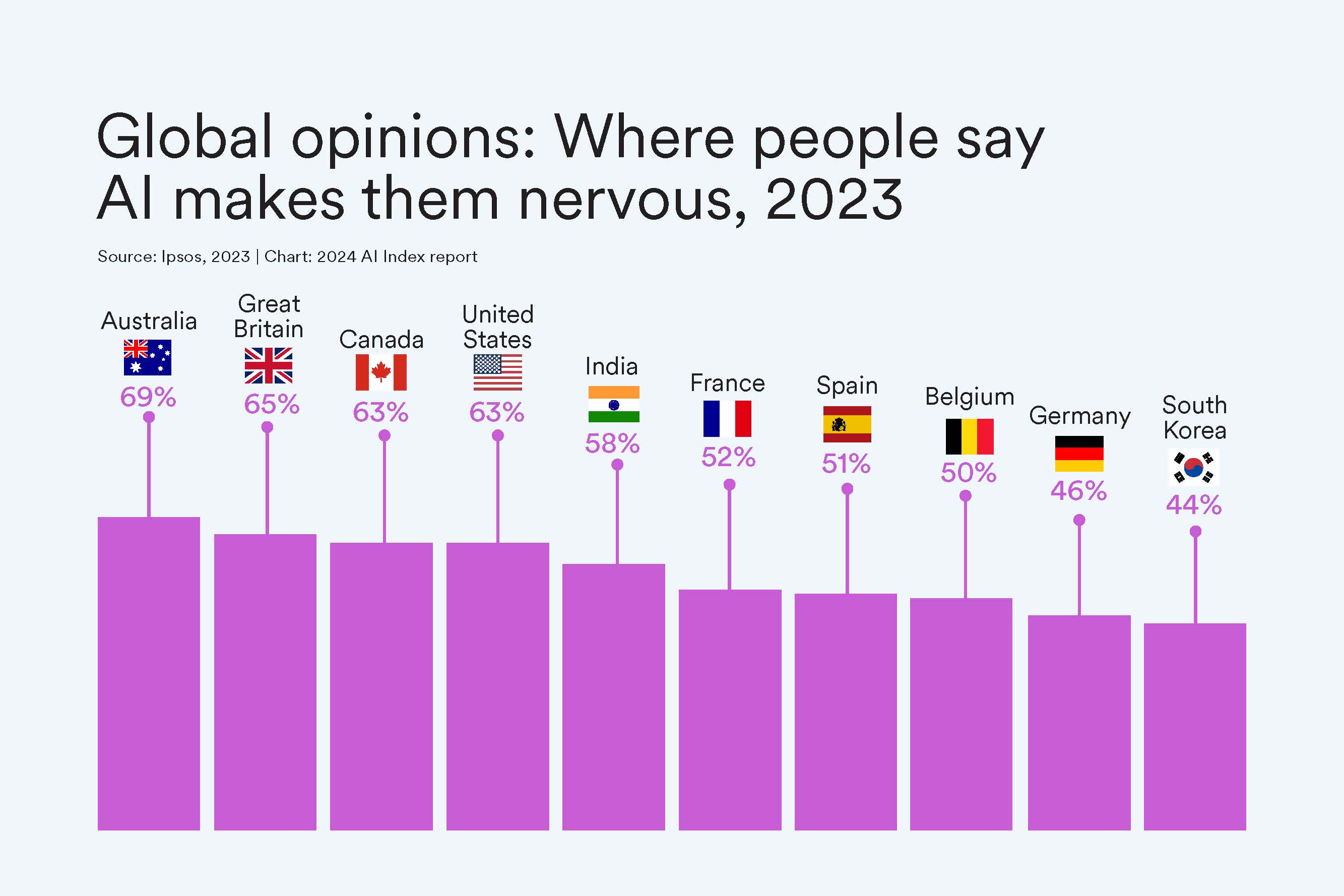
While the Commonwealth Worries About AI Products
When asked in a survey about whether AI products and services make you nervous, 69% of Aussies and 65% of Brits said yes. Japan is the least worried about their AI products at 23%.
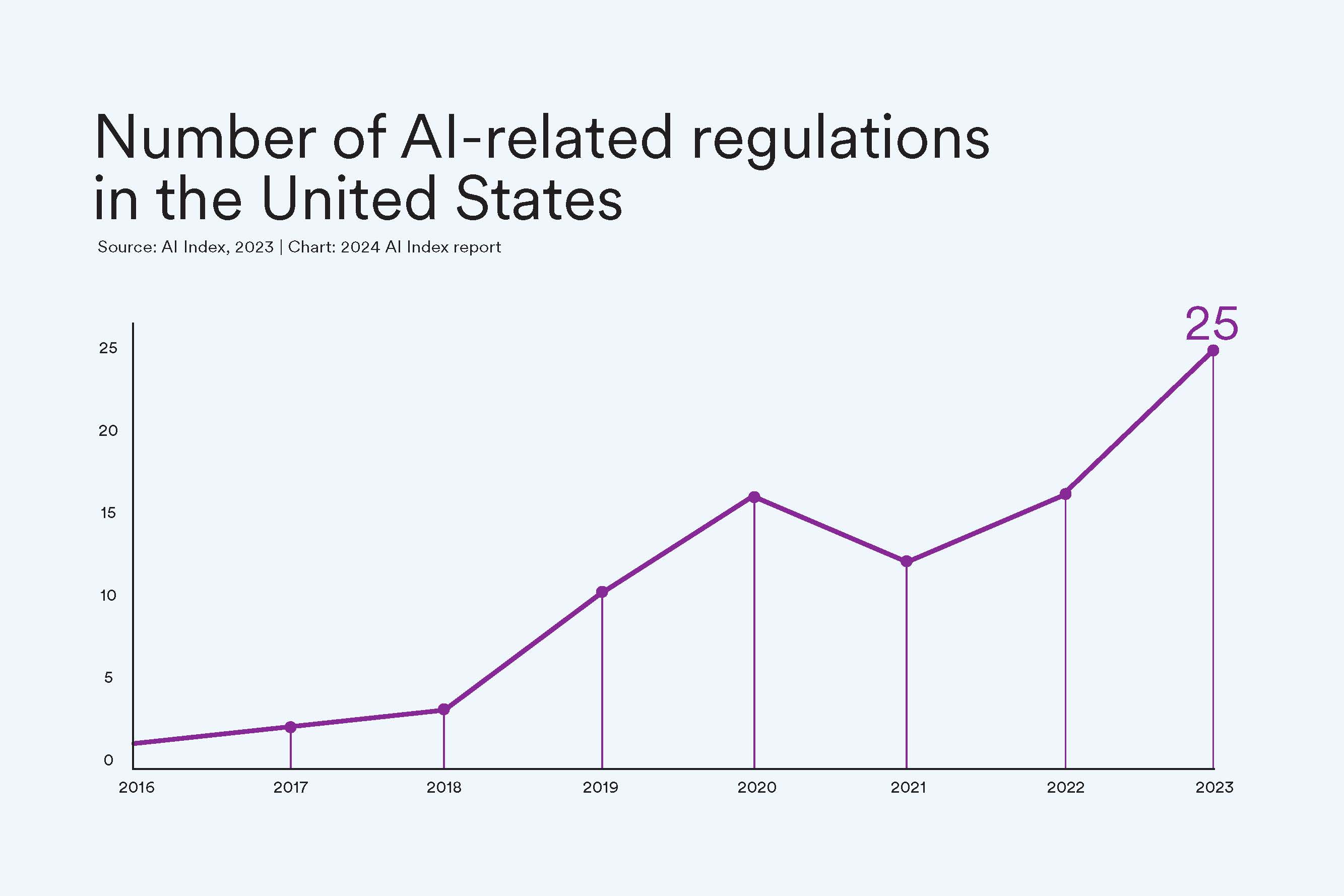
Regulation Rallies
More American regulatory agencies are passing regulations to protect citizens and govern the use of AI tools and data. For example, the Copyright Office and the Library of Congress passed copyright registration guidance concerning works that contained material generated by AI, while the Securities and Exchange Commission developed a cybersecurity risk management strategy, governance, and incident disclosure plan. The agencies to pass the most regulation were the Executive Office of the President and the Commerce Department.
The AI Index was first created to track AI development. The index collaborates with such organizations as LinkedIn, Quid, McKinsey, Studyportals, the Schwartz Reisman Institute, and the International Federation of Robotics to gather the most current research and feature important insights on the AI ecosystem.

